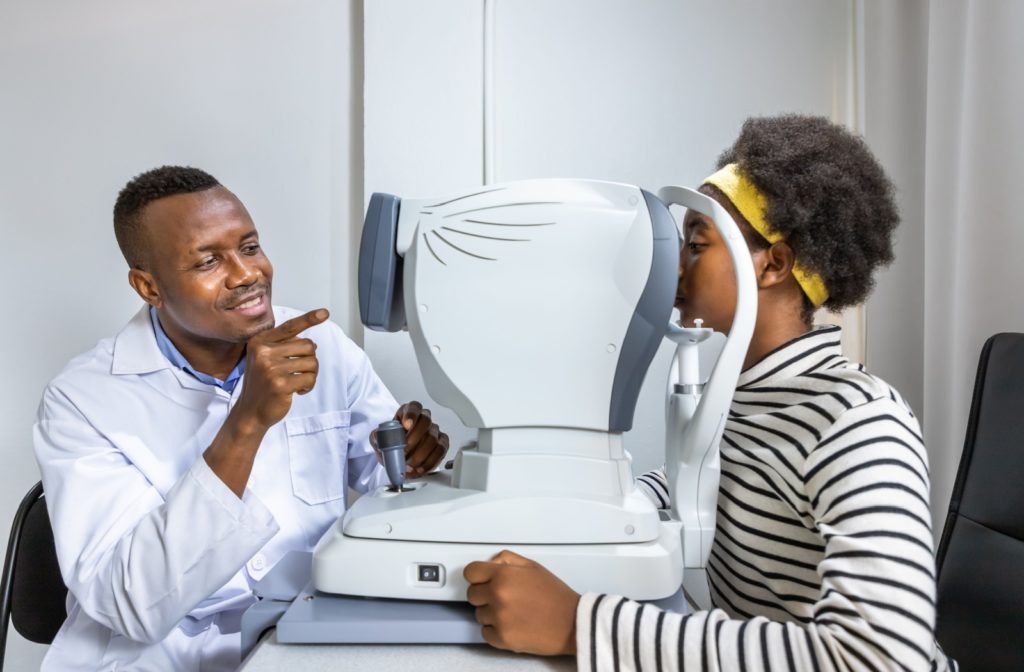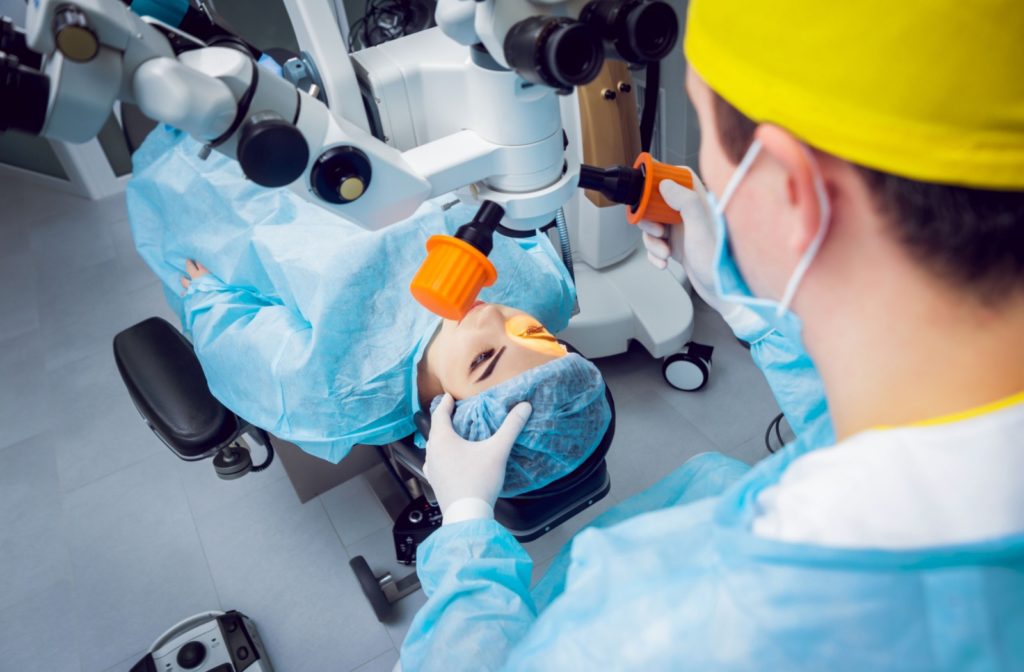Laser eye surgery, also known as LASIK (laser-assisted in situ keratomileusis), has become popular for those seeking freedom from glasses and contact lenses.
While the procedure is quick, proper recovery is essential to achieving optimal results. In this guide, we’ll walk you through the laser eye surgery recovery process, including what to expect and how to care for your eyes during this critical period.
What Is LASIK?
The excimer laser plays a pivotal role in LASIK eye surgery, serving as a critical component in the vision correction process. This is not an ordinary laser; it’s a specialized ultraviolet laser designed with the capability to meticulously remove a very thin layer of corneal tissue.
This action aims to reshape the cornea, the transparent front part of the eye, thereby altering the way light rays are focused onto the retina located at the back of the eye. As a result, patients often experience a significant improvement in their vision.
The excimer laser’s remarkable precision and control set it apart in LASIK procedures. It essentially acts as a microscopic sculptor, reshaping the cornea to help the patient see the world more clearly.
For many individuals who undergo this procedure, the outcome is a substantial reduction or complete elimination of their dependence on glasses or contact lenses, offering them the liberty to enjoy crisp and clear vision from the moment they wake up.
Before the Surgery
Before diving into the recovery process, it’s important to understand what happens during laser eye surgery. LASIK involves reshaping the cornea using a laser to correct vision problems such as nearsightedness, farsightedness, and astigmatism.
Your surgeon will provide detailed pre-operative instructions, which may include avoiding contact lenses for a certain period before the procedure and arranging transportation to and from the clinic on the day of surgery.
During the Surgery
During the procedure, your eye doctor applies numbing drops to your eyes to make sure you’ll be comfortable. Following this preparation, a precise incision is made in the upper layer of your cornea. This incision creates a delicate “flap,” which the surgeon folds back to access the corneal tissue beneath. Next, the excimer laser is employed to meticulously reshape your cornea according to your unique prescription needs.
Immediately After Surgery
After LASIK surgery, you’ll rest in the clinic for a short period. You’ll need someone to drive you home, as your vision may be blurry initially. It’s normal to experience some discomfort, such as a gritty sensation or mild burning in your eyes. You might even have the urge to rub your eyes, but avoiding doing so is best. Rubbing could disrupt the flap, potentially leading to the need for additional treatments.
You might also find your eyes are sensitive to light, or you may notice glares, starbursts, or halos around lights. The whites of your eyes could appear red or bloodshot as well. However, these symptoms typically improve significantly within the first few days following the surgery.
The First Few Days
In the first few days following your surgery, it’s advisable to postpone most physical activities. The exact duration depends on the activity’s physical demands, your personal well-being, and the guidance provided by your physician.
To mitigate the risk of infection, you may be required to avoid applying lotions, creams, or makeup around the eye area for up to two weeks post-surgery or until your doctor deems it safe. Your doctor may also recommend cleaning your eyelashes for a certain period following the surgery. Additionally, it’s wise to refrain from swimming or using hot tubs or whirlpools for 1-2 months.
The First Few Months
Following your surgery, it is common for your vision to undergo fluctuations during the initial months as your eyes adjust to their new shape–your eye doctor will likely recommend lubricating eye drops and wearing sunglasses when outdoors. Typically, a period ranging from 3–6 months is required before your vision achieves stability.
In this adjustment phase, you may encounter challenges such as glare, the appearance of halos, or difficulties in night driving. These visual disturbances are part of the stabilization process. Should you consider further correction or enhancement, it is important to make sure that your eye measurements remain consistent across two separate evaluations, spaced at least three months apart, before undertaking another surgical procedure.
It is important to acknowledge that while subsequent operations may enhance distance vision, they are less likely to alleviate other visual anomalies, including glare and halos.

Long-Term Recovery
While most patients experience improved vision within the first few weeks after LASIK surgery, full recovery can take several months. Your surgeon will guide you on when it’s safe to resume activities such as swimming, playing sports, and wearing eye makeup. It’s also important to attend regular eye exams to monitor your eye health and make sure that your vision remains stable over time.
Embracing Clear Vision
Laser eye surgery can be life-changing for many individuals, providing freedom from glasses and contact lenses.
By following your surgeon’s post-operative instructions and taking good care of your eyes during recovery, you can maximize the benefits of LASIK surgery and enjoy clear, crisp vision for years to come.
Remember to be patient with your eyes as they heal, and don’t hesitate to contact your surgeon if you have any questions or concerns.
Total Vision Pacific EyeCare is your first step towards clearer vision with LASIK–book an eye surgery consultation to discuss your vision needs today!



